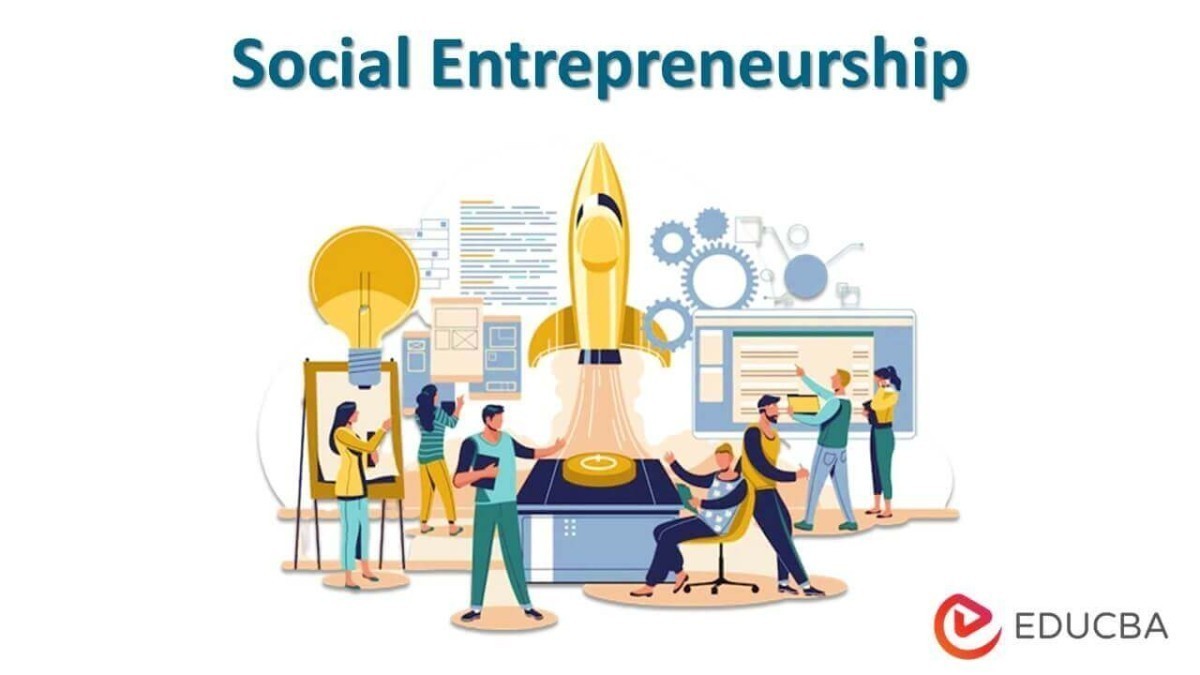Social Entrepreneurship: Using Business as a Force for Positive Change
In an era where social issues and environmental challenges are increasingly pressing, social entrepreneurship has emerged as a transformative approach to addressing these concerns. Unlike traditional businesses that focus solely on profit, social enterprises leverage the principles of entrepreneurship to create positive social and environmental impact. This article explores the essence of social entrepreneurship, highlights successful examples, and offers insights into how businesses can drive meaningful change.



Understanding Social Entrepreneurship
Defining Social Entrepreneurship
Social entrepreneurship involves using business techniques and innovative approaches to solve social, environmental, or community issues. The core goal is to address a social problem while generating financial returns that sustain and scale the impact. Social enterprises balance profit-making with purpose, focusing on creating value for society rather than solely for shareholders.
Key Characteristics
-
Mission-Driven: Social enterprises have a clear social or environmental mission at their core. This mission guides their business strategies and operations.
-
Innovative Solutions: Social entrepreneurs often use creative and unconventional approaches to tackle problems, bringing fresh perspectives and innovative solutions.
-
Sustainable Impact: The focus is on creating long-term, sustainable change rather than temporary fixes. Social enterprises aim to build models that can scale and replicate their impact.
Social vs. Traditional Entrepreneurship
While traditional entrepreneurship focuses primarily on profit, social entrepreneurship integrates social impact into its business model. Both types of entrepreneurship seek to solve problems and create value, but social enterprises prioritize societal benefits alongside financial success.
Successful Examples of Social Entrepreneurship
Global Success Stories
-
TOMS Shoes: Founded by Blake Mycoskie, TOMS Shoes is renowned for its "One for One" model. For every pair of shoes sold, TOMS donates a pair to a child in need. This model addresses the issue of footwear scarcity in impoverished regions while building a profitable business.
-
Grameen Bank: Founded by Muhammad Yunus, Grameen Bank provides microloans to impoverished individuals, primarily women, in Bangladesh. By offering small loans without requiring collateral, Grameen Bank empowers entrepreneurs to start businesses and lift themselves out of poverty.
Local Impact Initiatives
-
Goodwill Industries: Goodwill Industries operates thrift stores and provides job training and employment services for individuals with disabilities or other barriers to employment. The organization’s business model supports its mission to enhance job opportunities and economic self-sufficiency.
-
Warby Parker: Warby Parker, a glasses retailer, operates under a "Buy a Pair, Give a Pair" model. For every pair of glasses sold, the company provides a pair to someone in need. Warby Parker combines a sustainable business model with a commitment to vision care and accessibility.
Implementing Social Entrepreneurship Strategies
Identifying a Social Issue
-
Research and Awareness: Start by identifying a social or environmental issue you are passionate about. Conduct research to understand the root causes, existing solutions, and gaps in current approaches.
-
Community Engagement: Engage with the community affected by the issue. Their insights and experiences are crucial for developing effective solutions and ensuring the initiative addresses real needs.
Developing a Business Model
-
Value Proposition: Clearly define the value your enterprise will provide. How does it address the social issue, and what makes it unique compared to existing solutions?
-
Revenue Streams: Determine how the enterprise will generate revenue to sustain its operations. This could include sales, donations, grants, or a combination of revenue sources.
-
Impact Metrics: Establish metrics to measure the social impact of your enterprise. This could involve tracking outcomes such as the number of people served, improvements in quality of life, or environmental benefits.
Building Partnerships and Networks
-
Collaborate with Stakeholders: Partner with other organizations, businesses, and government agencies that align with your mission. Collaboration can amplify your impact and provide access to additional resources and expertise.
-
Engage with Investors: Seek out investors who are interested in social impact, such as impact investors or venture philanthropists. These investors prioritize both financial returns and social impact.
Scaling and Sustainability
-
Replicate Successful Models: Once you have a proven model, explore opportunities to replicate or scale your impact in other regions or communities.
-
Focus on Sustainability: Develop strategies to ensure long-term sustainability, including diversifying revenue streams, building a strong organizational structure, and continuously evaluating and improving your impact.
Challenges and Considerations
Balancing Profit and Purpose
-
Navigating Trade-Offs: Balancing financial sustainability with social impact can be challenging. It’s essential to make strategic decisions that align with both your mission and business goals.
-
Managing Expectations: Communicate transparently with stakeholders about your enterprise’s goals, challenges, and progress. Managing expectations helps build trust and support.
Measuring Impact
-
Quantitative vs. Qualitative: Use both quantitative data (e.g., numbers of people served) and qualitative data (e.g., personal stories) to assess your impact. A comprehensive approach provides a clearer picture of your enterprise’s effectiveness.
-
Continuous Improvement: Regularly evaluate and adjust your strategies based on impact assessments. Continuous improvement helps enhance both social outcomes and business performance.
The Future of Social Entrepreneurship
Growing Awareness and Support
-
Increased Recognition: Social entrepreneurship is gaining recognition as a viable and impactful approach to addressing societal challenges. Increased awareness is leading to more support from investors, policymakers, and the public.
-
Emerging Trends: Innovations in technology, sustainability, and social impact are shaping the future of social entrepreneurship. Staying informed about these trends can help social enterprises adapt and thrive.
Expanding Global Impact
-
Global Challenges: As global challenges such as climate change, inequality, and health crises become more pressing, social entrepreneurship will play a crucial role in finding and implementing solutions.
-
Cross-Border Collaboration: Social entrepreneurs are increasingly collaborating across borders to address global issues. International partnerships can enhance the effectiveness and reach of social impact initiatives.



Social entrepreneurship represents a powerful fusion of business acumen and social mission. By using innovative business strategies to tackle pressing social and environmental issues, social entrepreneurs are proving that profit and purpose can go hand in hand. Embracing social entrepreneurship not only contributes to positive change but also inspires others to consider how they can use their skills and resources for the greater good. Whether through small local initiatives or large-scale global projects, social entrepreneurs are leading the way toward a more equitable and sustainable future.












